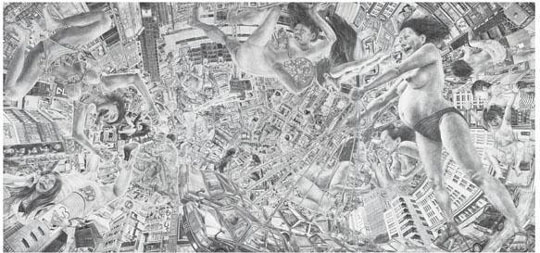At times, Tokyoites appear to be some of the most poker-faced people on the planet. But what exactly is going on behind those apparently emotionless expressions? The art of Mikiko Kumazawa suggests maybe quite a lot.
Working in pencil on large sheets of paper, the 26-year-old graduate of Musashino Art University takes the objects, situations, scenes, and panoramas of everyday urban life as her subject matter and infuses this with a surreal, manic energy — creating wild, highly detailed drawings, like the seven works on display at a short-lived exhibition at the Setagaya Art Museum. The show, which honors the inaugural winners of the "Hisho" Setagaya Art Award, also includes the much lower-key art of twin-sister pairing Akiko and Masako Takada.
But, while the Takadas' twee mini-sculptures and videos could fit almost anywhere on the recent Micropop bandwagon, Kumazawa's art stands alone as a unique and powerful artistic expression. By suggesting stresses and suppressed emotions unleashed within the confines of the mind, Kumazawa's works point both outward to the chaos of the city as well as inward to the psychological realm.


















With your current subscription plan you can comment on stories. However, before writing your first comment, please create a display name in the Profile section of your subscriber account page.